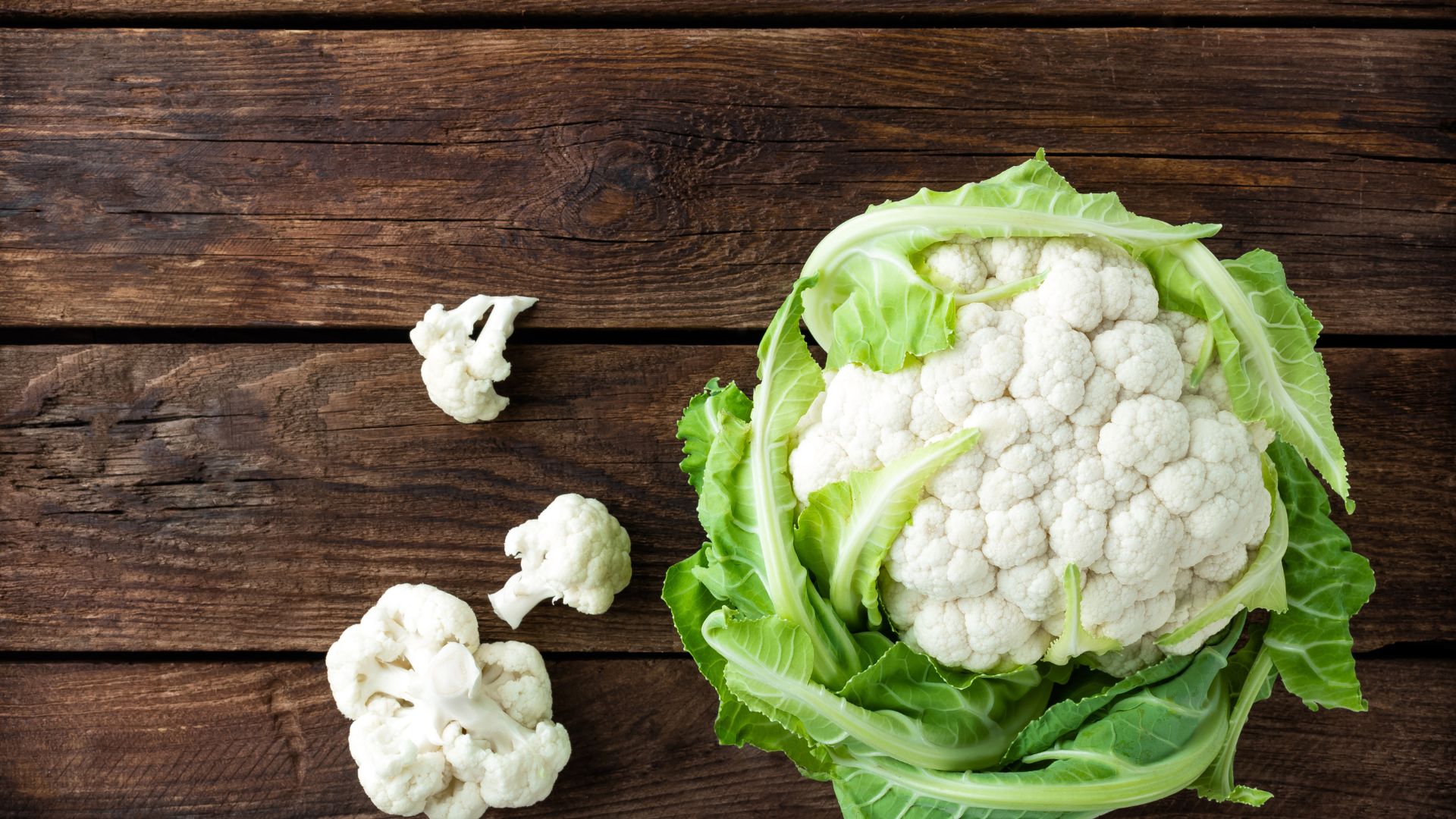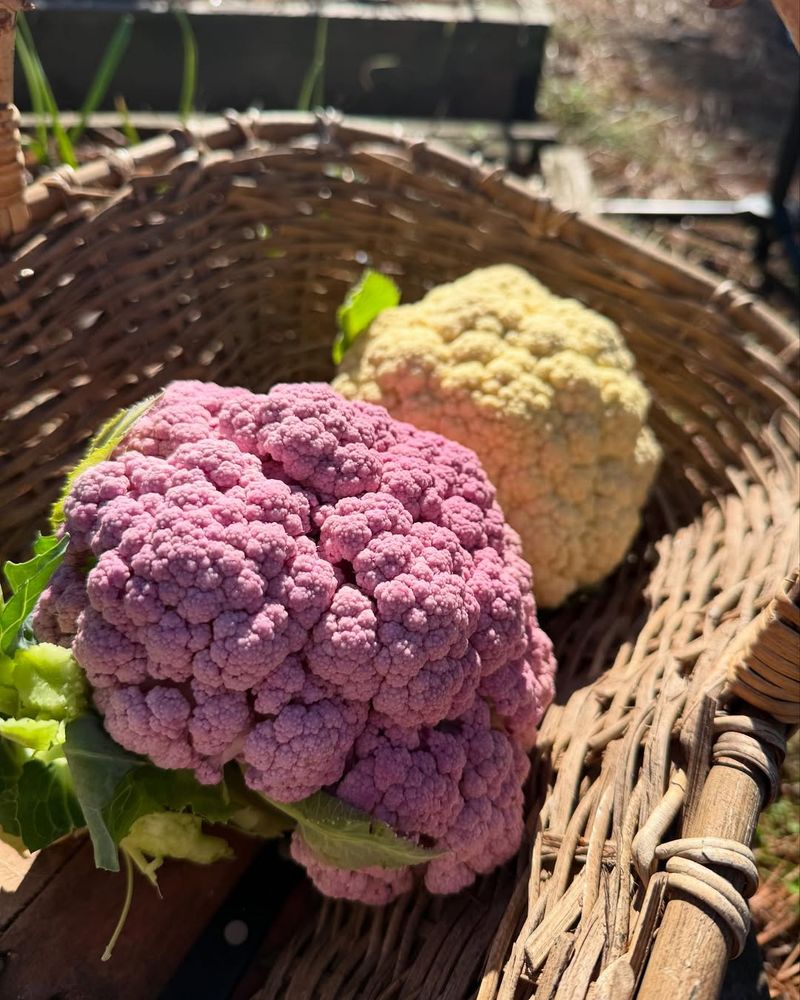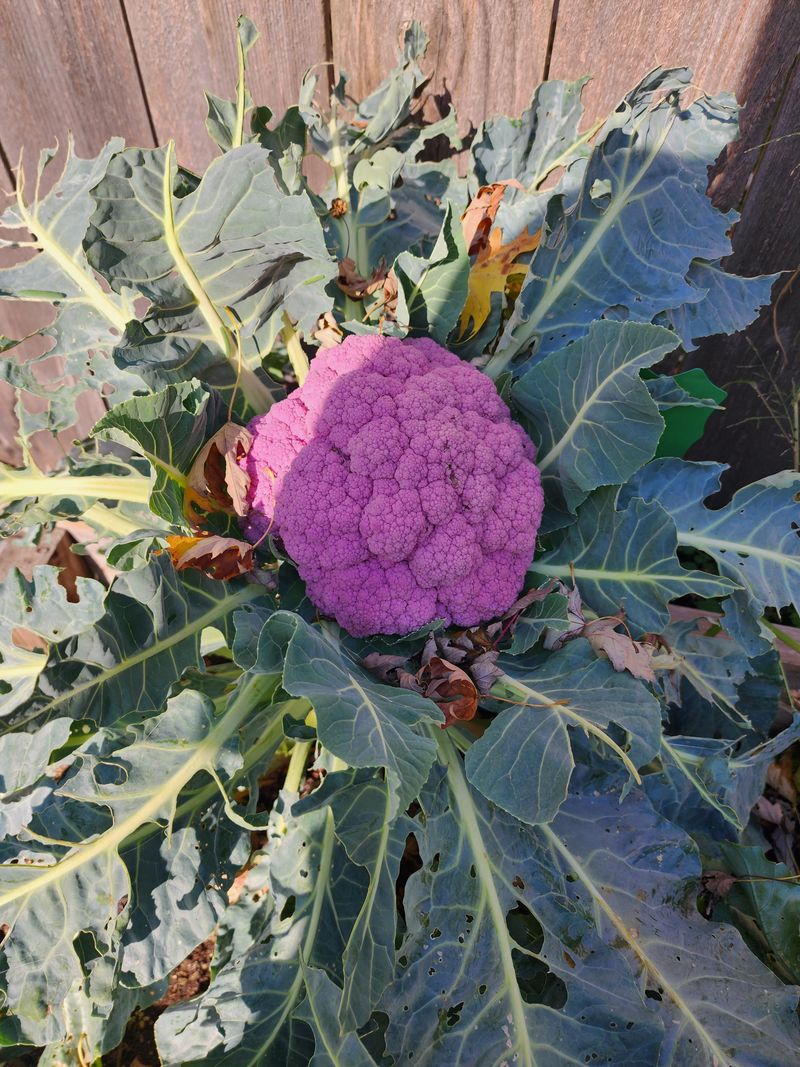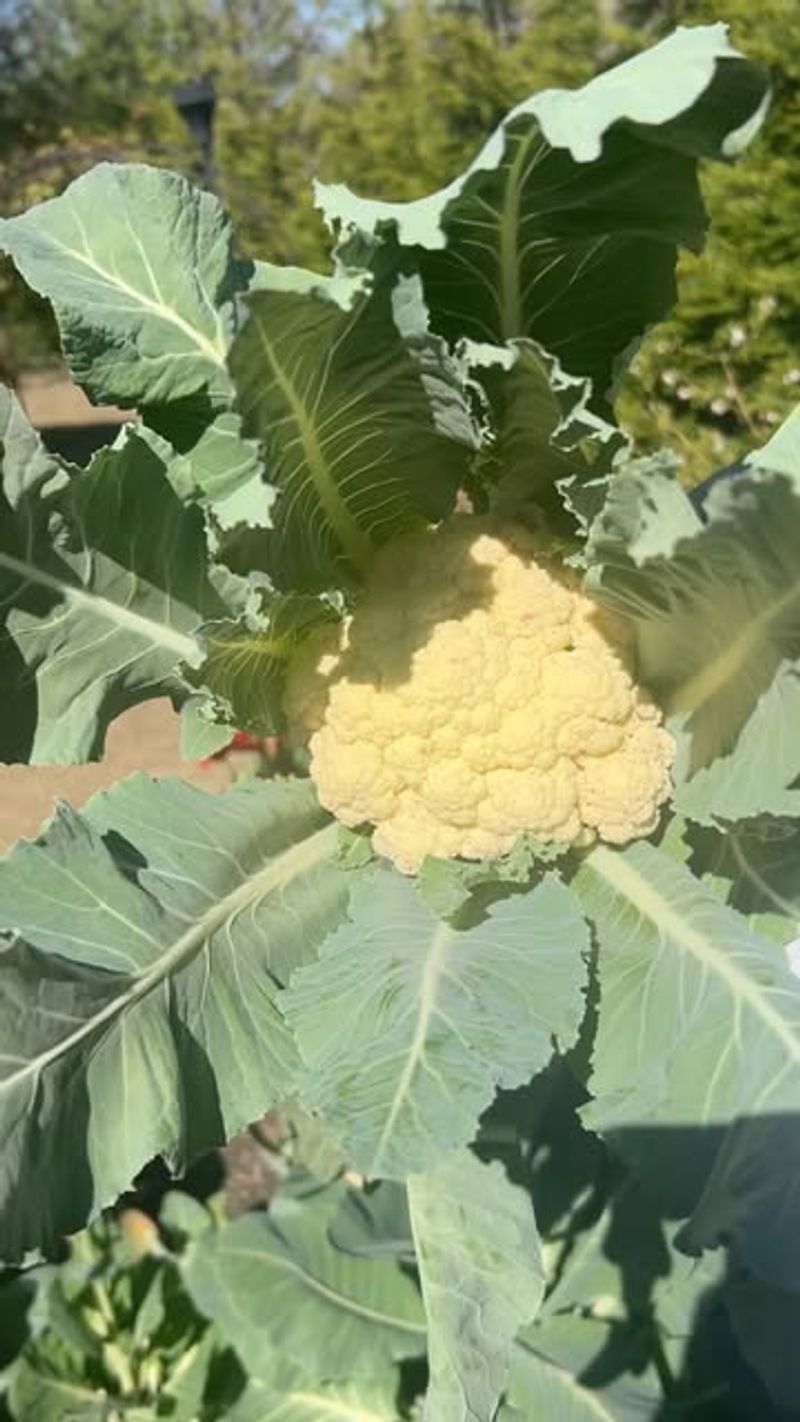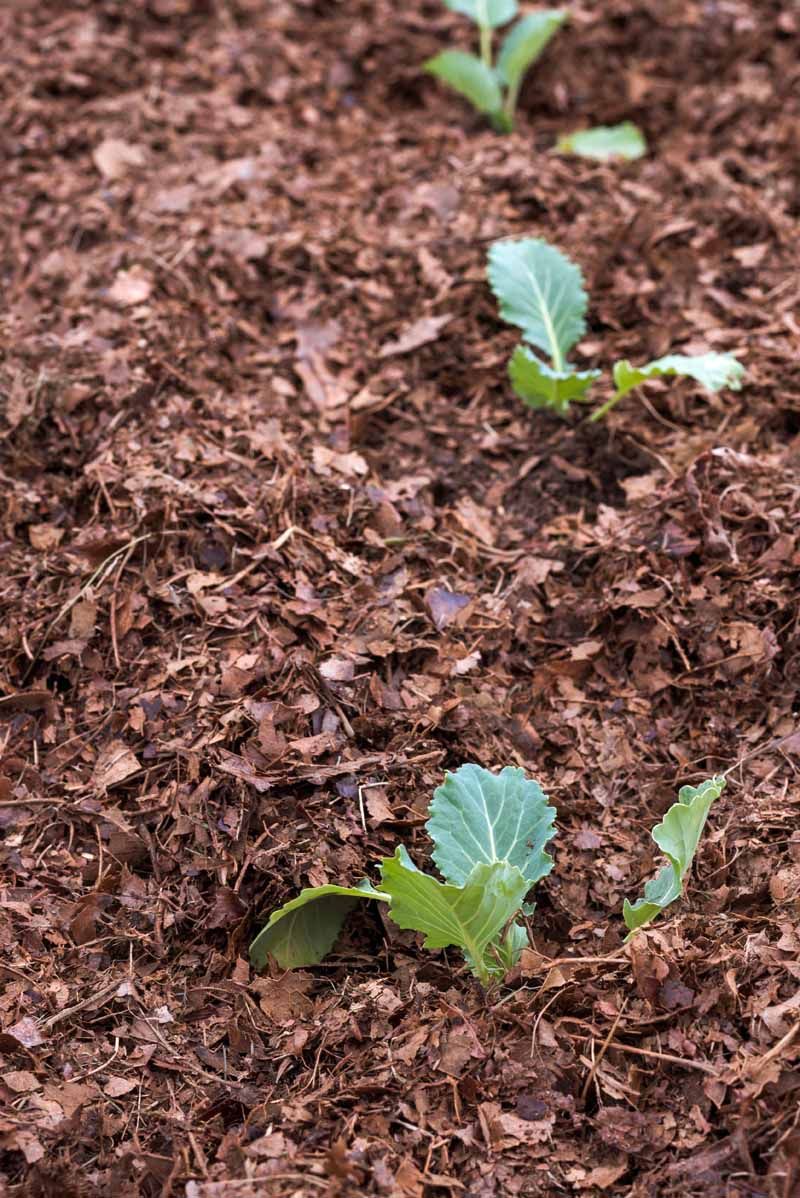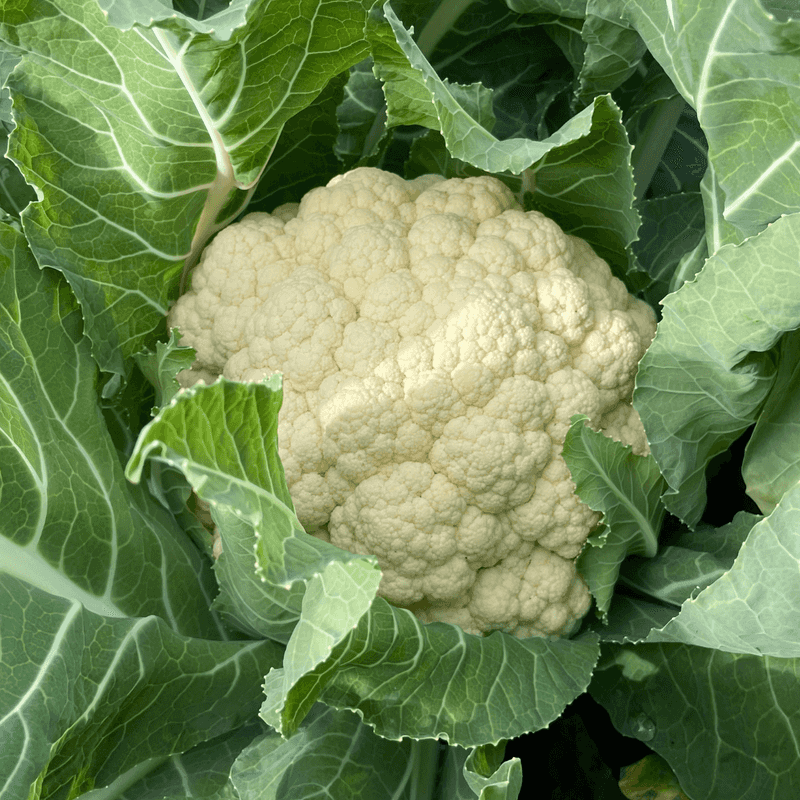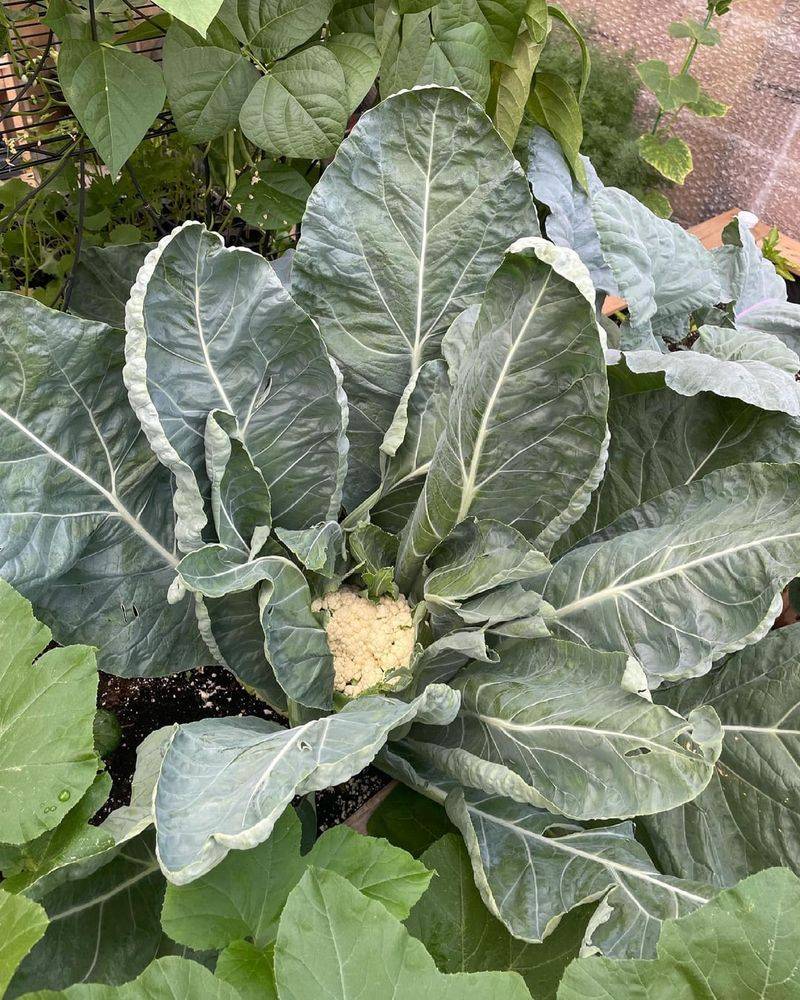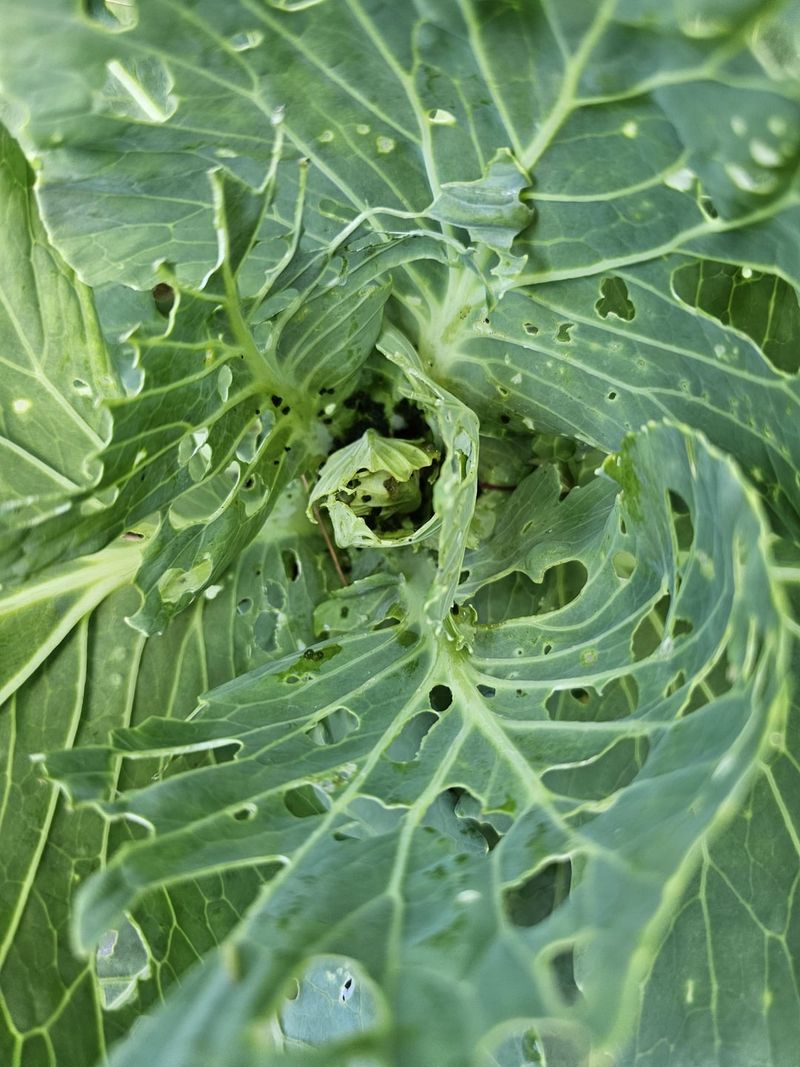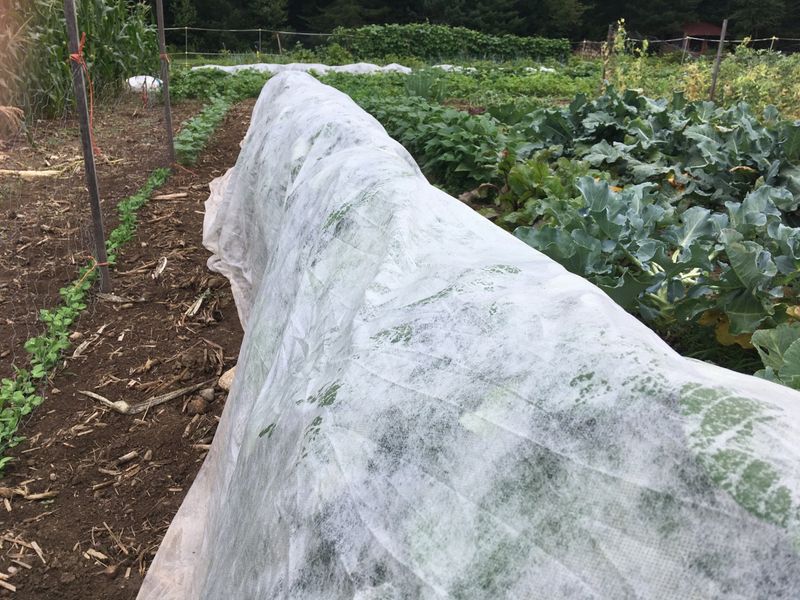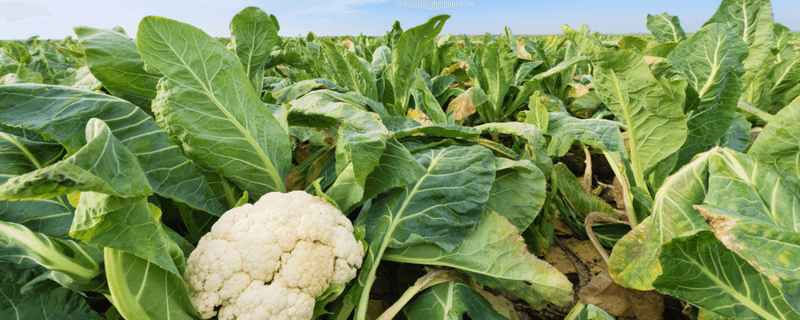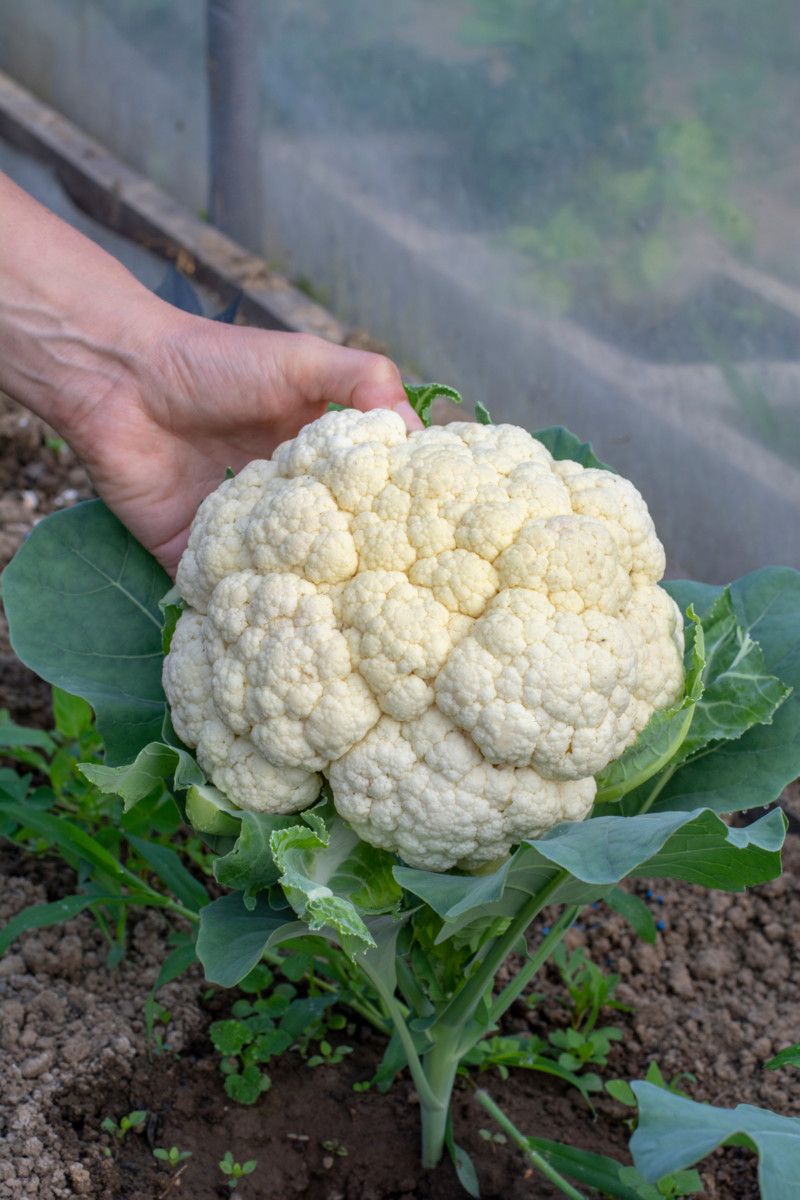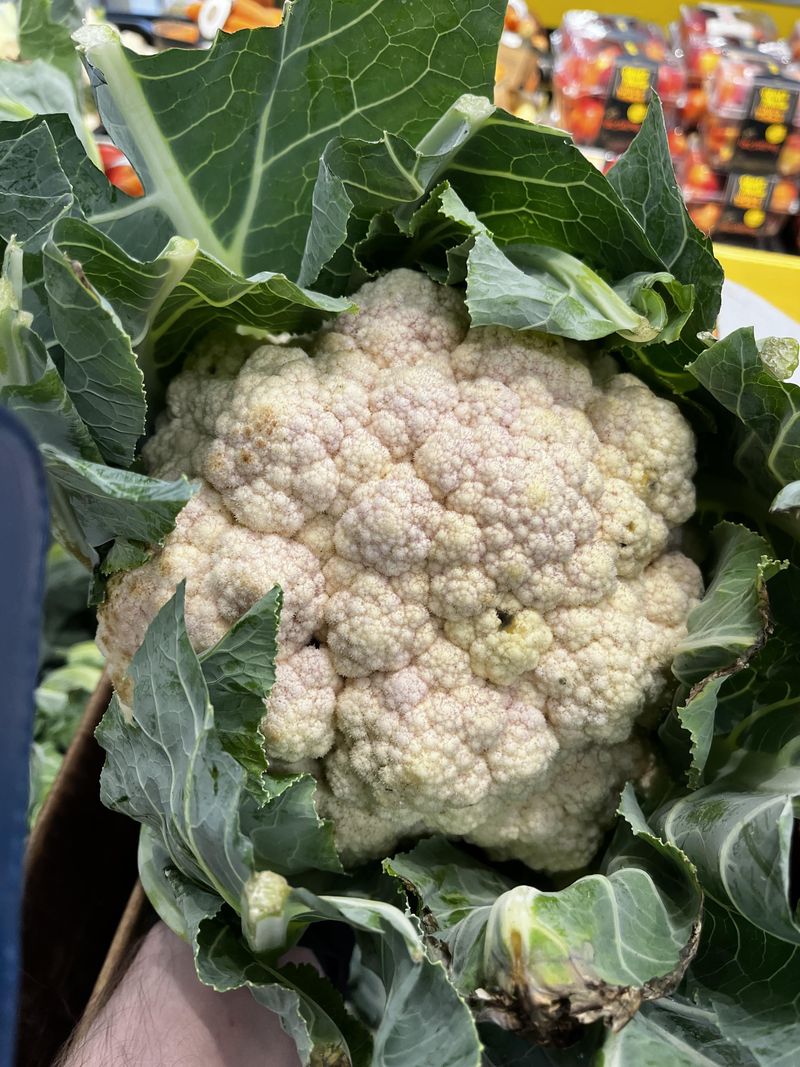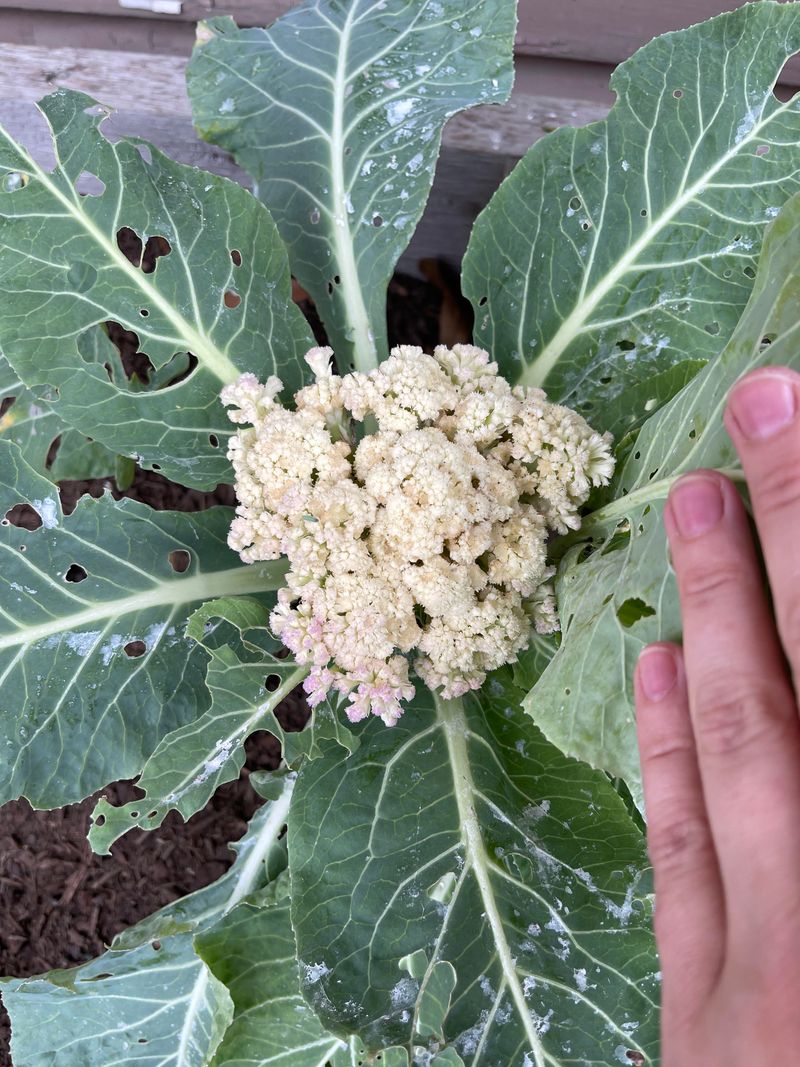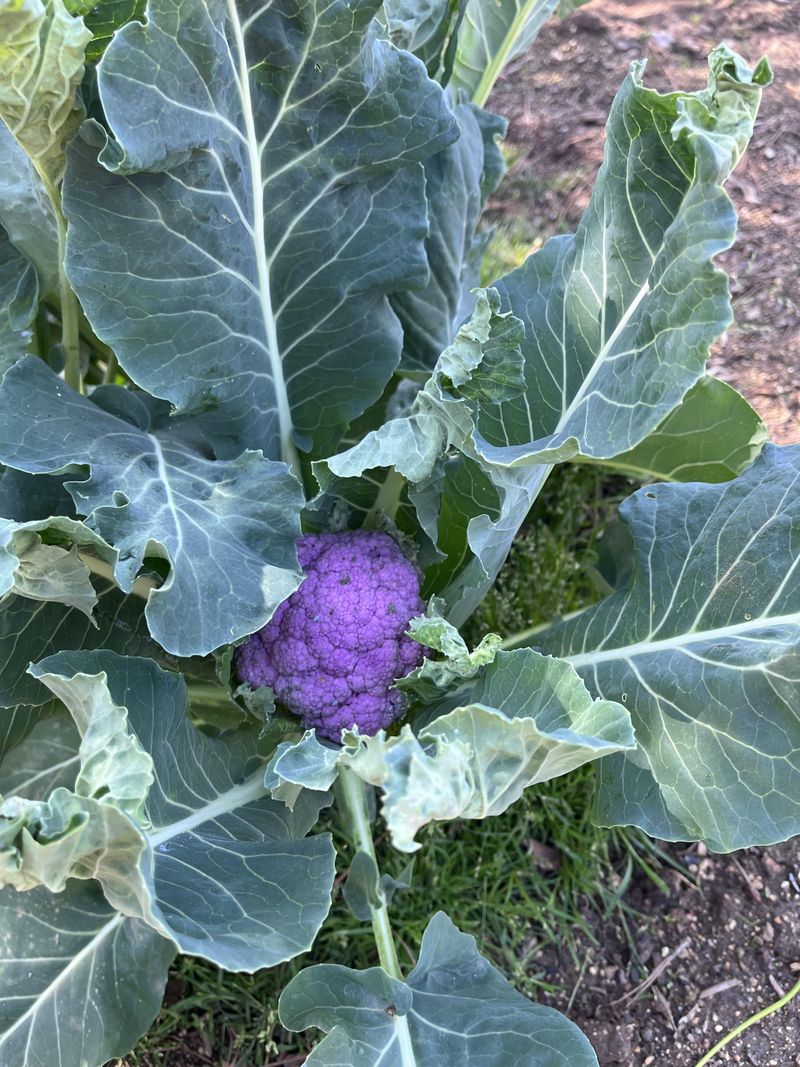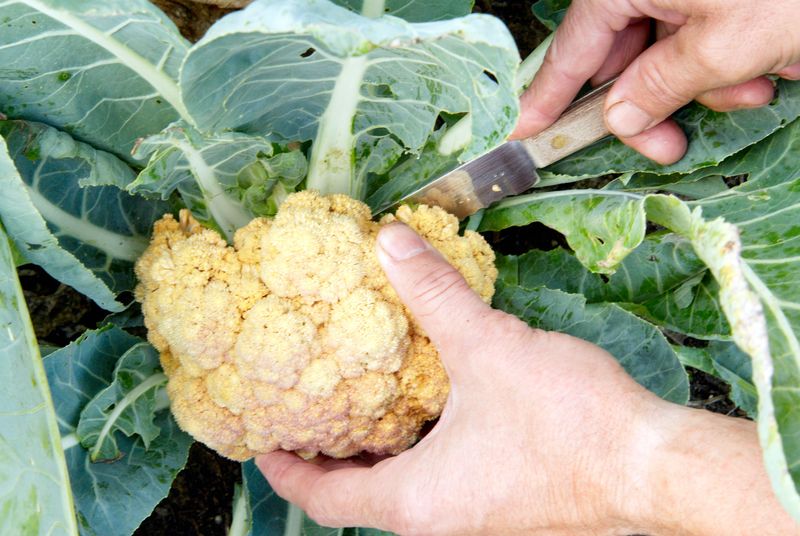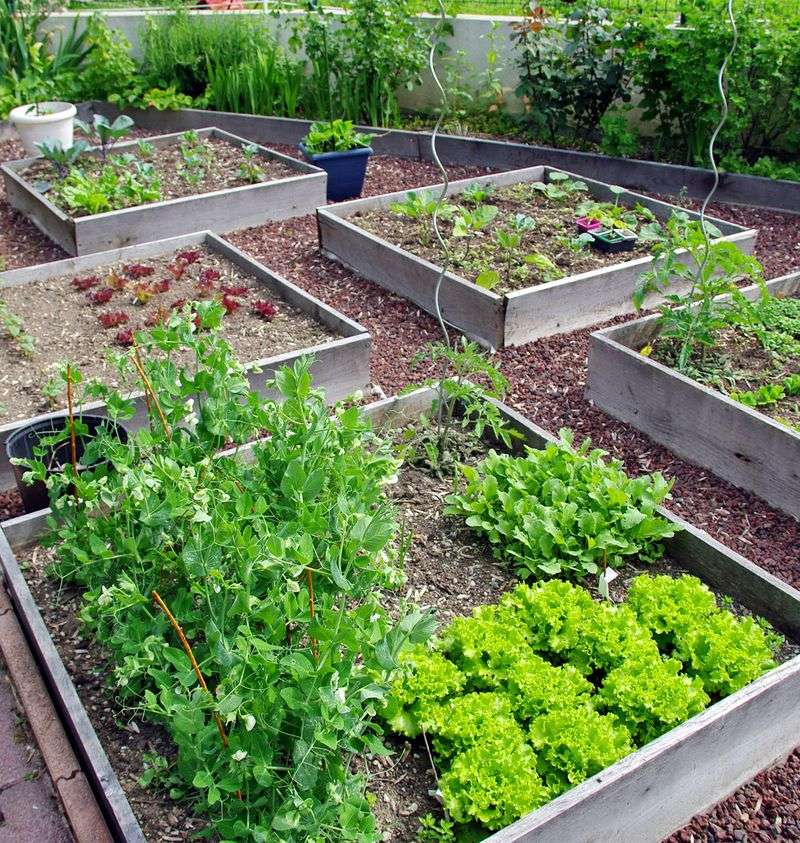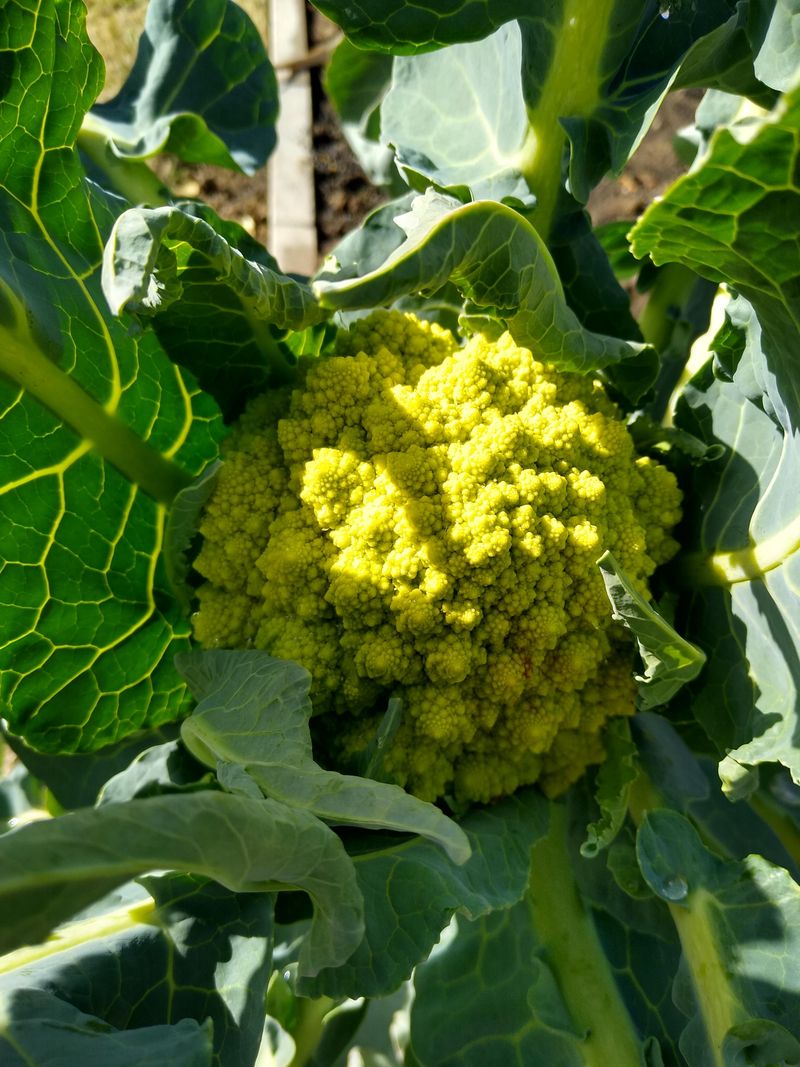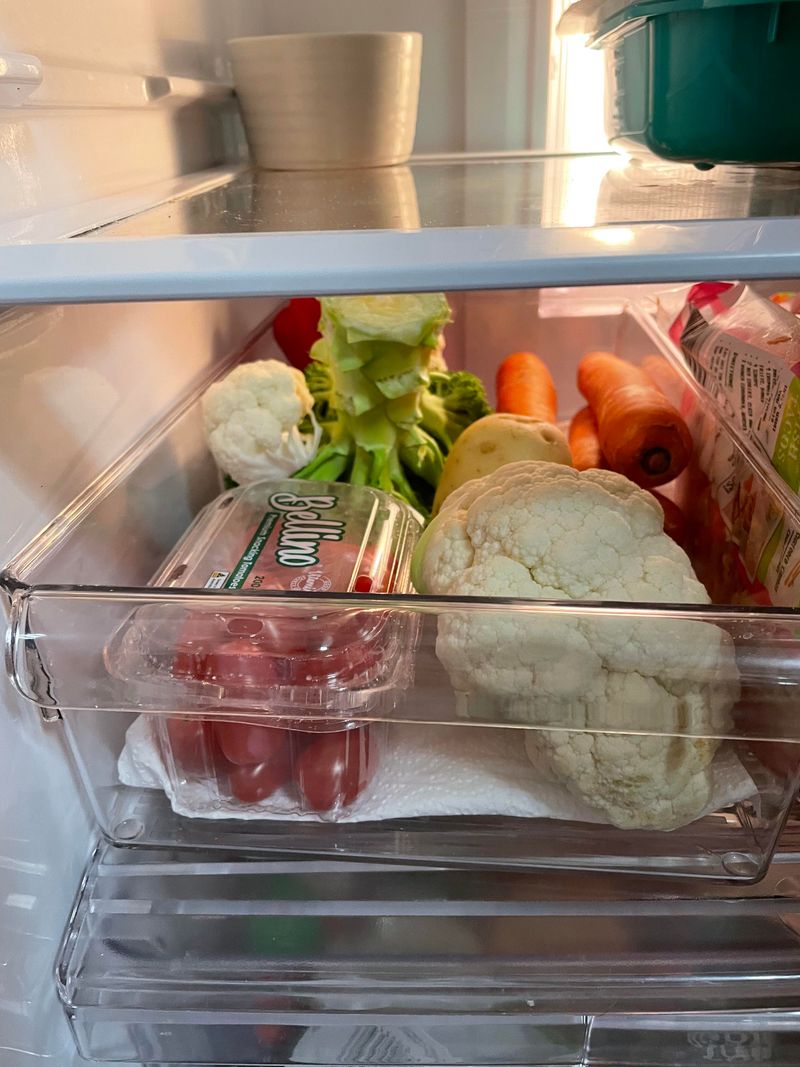Harvesting the perfect cauliflower is a mix of patience, timing, and just a little bit of luck. I’ve had my fair share of tiny, stubborn heads and overgrown, bitter ones. But with the right tricks, you can get it just right.
Join me as I uncover the secrets shared by master gardeners, enriched with personal experiences (and a few lessons learned the hard way).
Whether you’re a seasoned gardener or just starting, these tips will guide you to a bountiful cauliflower harvest. And maybe even make the process a little more fun!
1. Start With Nutrient-Rich Soil
I’ve learned that the secret to robust cauliflower begins below the surface. Nutrient-rich soil is like the ultimate spa day for plants. I remember my first garden. The soil was more like a sandbox than a nutrient haven.
A little compost, some organic matter, and voilà, my cauliflower was thriving. Ideal soil should be well-drained and packed with nutrients.
Don’t skimp on the good stuff, trust me. Testing soil pH is a smart move too. A balanced soil pH keeps your cauliflower content and growing strong.
2. Choose The Right Variety For Your Climate
Selecting the right cauliflower variety for your climate is like picking the perfect outfit for the weather. I’ve experimented with various types, and trust me, not all cauliflower is created equal.
In warmer climates, early-maturing varieties thrive, while in cooler areas, choose hardy options. The diversity in cauliflower is astonishing. There are even purple and orange varieties!
Each one has its quirks, but understanding your local climate helps in choosing the perfect type. This little nugget of wisdom can save you from endless gardening woes.
3. Plant At The Right Time
Timing is everything, especially when planting cauliflower. I’ve missed the boat a few times and ended up with stunted growth. Planting too early or late can be disastrous.
In spring, start planting once the soil is workable and the last frost has passed. For fall harvests, plant mid to late summer. The key is aligning with nature’s rhythms.
I find that keeping a gardening calendar handy is a lifesaver. It not only keeps you organized but also ensures your plants get the best start possible.
4. Provide Consistent Moisture
Consistent moisture is like a soothing melody for cauliflower. In my early gardening days, I underestimated the importance of regular watering. A wilting plant quickly reminded me!
The trick is avoiding waterlogged soil while keeping it consistently damp. I’ve found that watering deeply but less frequently does wonders.
Using drip irrigation can be a game-changer, ensuring even distribution without drowning your plants. Trust me, keeping a regular watering schedule keeps your cauliflower happy and healthy.
5. Use Mulch To Retain Soil Moisture
I used to think it was just decorative, but boy was I wrong! Mulch retains moisture in the soil, reducing the need for constant watering.
Plus, it keeps weeds at bay, which is always a bonus. I remember my first time using straw mulch. It was like giving my garden a cozy blanket.
Besides, mulch helps regulate soil temperature, keeping your cauliflower cool in the heat and warm in the cold. It’s a simple yet effective way to boost your harvest.
6. Give Them Full Sun Exposure
Cauliflower loves the sun, almost as much as I love my morning coffee. Placing them in full sun ensures they get the energy needed for growth. It’s similar to charging a solar-powered device.
I once planted some in a shady corner, and well, they looked more like broccoli wannabes. Six to eight hours of sunlight is ideal. Just be mindful of scorching heat.
A bit of shade during peak hours can prevent wilting. With the right sun exposure, your cauliflower will be thriving and ready for harvest.
7. Space Plants Properly For Airflow
Proper spacing is the breathing room your cauliflower needs. I once crowded my plants, thinking more is better.
Spoiler alert: It’s not! Giving at least 18-24 inches between plants ensures good air circulation, preventing mold and mildew. It’s like throwing a party with enough room to dance.
Crowded conditions can lead to disease and poor growth. I learned this the hard way, and now my garden parties (and my cauliflowers) have plenty of space to thrive.
8. Feed With Balanced Fertilizer
Using this for your cauliflower is like fueling a car. It won’t get far without it. A balanced fertilizer ensures strong growth and healthy heads.
I once overfed my plants, and let’s just say they weren’t happy campers. A nitrogen-heavy diet can lead to leaves but stunted heads.
I recommend using a well-balanced, slow-release fertilizer every 4-6 weeks during the growing season. It’s a small investment for a big payoff, resulting in healthy and delicious cauliflowers.
9. Protect From Temperature Extremes
Temperature swings can be as unpredictable as my cat’s mood. Protecting cauliflower from extreme temperatures is crucial. Too hot or too cold, and your plants will sulk.
I’ve found using shade cloths during heatwaves and row covers during cold snaps works wonders. Consistent temperatures lead to consistent growth, and who doesn’t want that?
Monitoring weather forecasts and being prepared can save your harvest from unexpected weather tantrums. Think of it as a cozy sweater for your plants.
10. Watch Out For Cabbage Worms
These are the uninvited guests at the cauliflower party. I learned that the hard way when I found holes in my once-perfect leaves. Vigilance is key. Regularly inspect the undersides of leaves for eggs and worms.
Handpicking is effective, though a bit gross. Using organic pesticides like neem oil or introducing beneficial insects are also great strategies.
I remember my first successful worm-free harvest. It was like winning the gardening lottery. Keeping a sharp eye out ensures your cauliflower remains pristine.
11. Use Row Covers To Prevent Pests
My plants were plagued by pests until I discovered this game-changer. Row covers act as the perfect security system for your garden.
These covers keep unwanted critters at bay while letting sunlight and rain in. Lightweight and easy to use, they’re a gardener’s best friend. I recall the peace of mind they brought me, knowing my plants were safely tucked away.
Using row covers can drastically reduce pest problems and is an eco-friendly solution that keeps your cauliflower safe and sound.
12. Keep Weeds Under Control
These are the freeloaders of the garden world. I used to let them run wild, thinking they added charm. They don’t. Weeds compete for nutrients, water, and space, hampering your cauliflower’s growth.
Regular weeding is essential. A hoe or hand pulling works wonders. I find it therapeutic, almost like a garden meditation session.
Keeping weeds in check ensures your cauliflower gets all the goodness it needs to flourish. Plus, a weed-free garden looks immaculate.
13. Water At The Base To Prevent Rot
Watering at the base is the secret handshake of cauliflower care. Spraying leaves is tempting, but it can lead to rot and disease.
I learned this when my first crop rotted before my eyes. Directing water to the soil keeps leaves dry and roots hydrated. It’s a little change with a big impact.
I now use a watering can with a long spout for precision. This simple technique keeps plants healthy and rot-free. It’s like giving them a drink without the splash zone mess.
14. Avoid Nitrogen-Heavy Fertilizers
These are like energy drinks. Too much can cause a sugar crash. My early gardening days were filled with leaves but little cauliflower, thanks to my overzealous fertilizing.
Choose a balanced fertilizers to avoid this pitfall. The right mix encourages healthy head formation without overgrowth of foliage.
I learned to read labels carefully and adjust my feeding habits. This approach has transformed my garden, ensuring a bountiful cauliflower harvest. It’s all about balance, much like a good diet.
15. Tie Leaves Over Heads For Blanching
Blanching cauliflower involves tying leaves over the heads to protect them from the sun. It’s like giving them a sun hat. I was skeptical at first, but the results were undeniable.
This method keeps the heads white and tender, free from sunburn. It’s a simple technique, yet it transforms the appearance and flavor.
I remember my first blanched cauliflower. It was like uncovering a hidden treasure. This step is essential for that classic, pristine look we all desire in our harvest.
16. Harvest At The Right Size
Harvesting cauliflower at the right size is like picking fruit at its peak ripeness. Too early, and it’s underwhelming. Too late, and it’s tough and bitter.
I once waited too long, thinking bigger was better, but learned my lesson the hard way. Ideally, heads should be about 6-8 inches in diameter.
Keep an eye on them and trust your instincts. I now use a ruler to ensure accuracy. This precision guarantees a delicious, tender cauliflower that’s perfect for any dish.
17. Cut With A Sharp Knife For Clean Harvest
Using a sharp knife is a simple yet crucial step. I once used dull scissors, and it was a disaster. A clean cut prevents damage and ensures easy storage.
Hold the head with one hand and slice through the stem with the other. It’s like a culinary precision move.
I keep my knife sharp and ready, treating each harvest like a special occasion. This method preserves the plant and leaves you with pristine cauliflower heads, ready for the table.
18. Rotate Crops To Prevent Disease
This is the secret weapon against disease. Planting the same family in the same spot invites trouble, as I discovered with a wilted cauliflower patch one year.
Rotating crops enhances soil health and disrupts pest cycles. I now plan my garden like a chessboard, moving pieces strategically.
It’s an extra step, but it’s worth it for a thriving garden. This practice keeps diseases at bay and ensures a robust harvest year after year. Think of it as nature’s way of keeping things interesting.
19. Don’t Leave Mature Heads In The Garden Too Long
Leaving mature cauliflower heads in the garden too long is a rookie mistake. I’ve done it, and they turned into sad, yellowed blobs.
Once the heads are firm and reach the desired size, it’s time to harvest. Delaying can lead to over-maturity and poor taste.
I now keep a watchful eye as they near readiness, marking the calendar for harvest day. It’s a timing game that pays off in flavor and quality. This vigilance ensures your cauliflower is picture-perfect and tasty.
20. Store Properly For Freshness
My first harvest went limp within days. Now, I wrap heads in plastic or store them in a perforated bag in the fridge’s crisper drawer. This keeps them fresh for weeks.
Avoid direct contact with water to prevent mold. I learned the hard way that proper storage is as crucial as growing.
It’s like putting your veggies in a comfy bed. With these tips, your cauliflower will stay crisp and ready for delicious meals.

